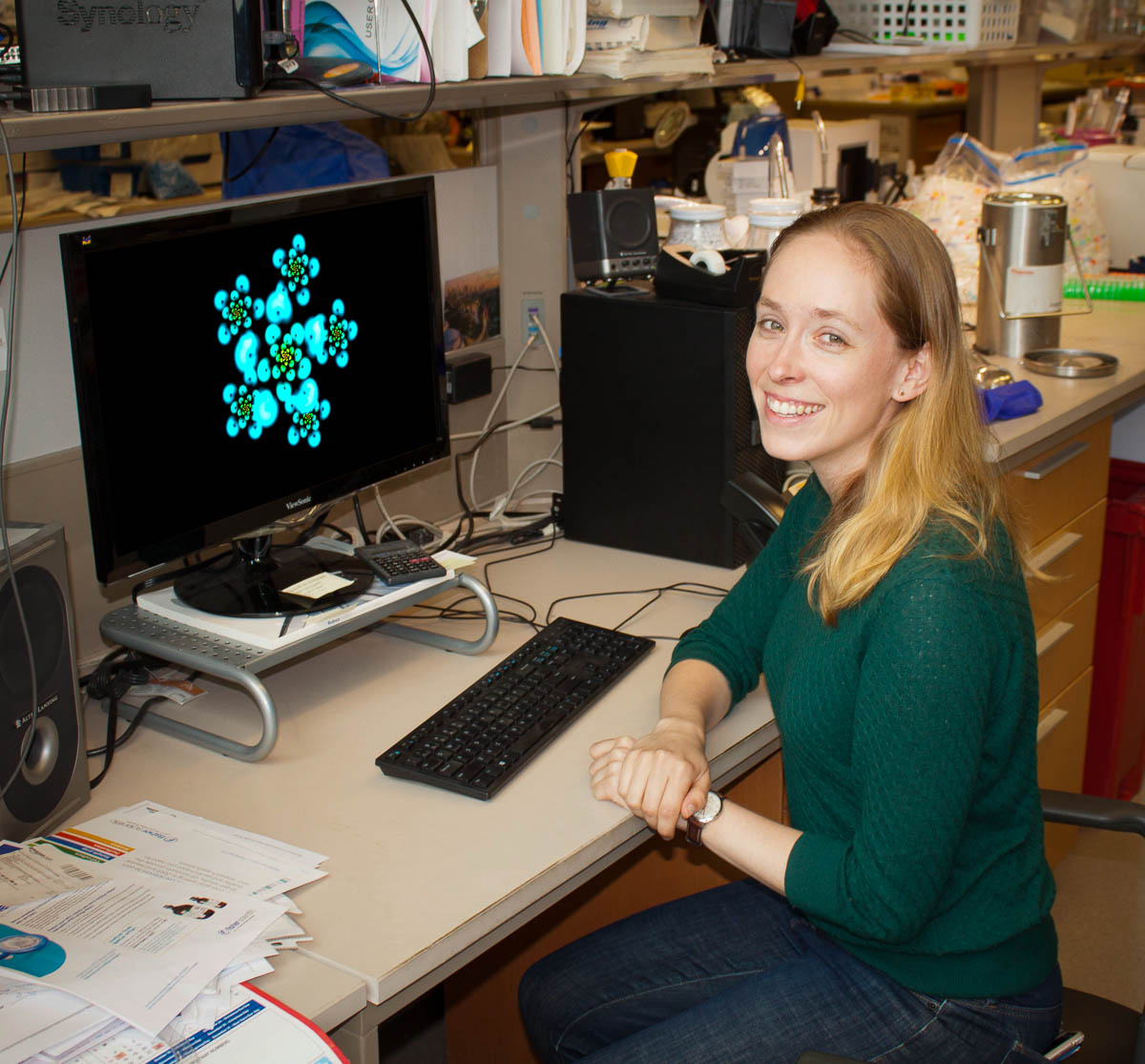Chemists Pen Column to Warn Public of Viral Dose
Joshua Rabinowitz, Professor of Chemistry and the Lewis Sigler Institute for Integrative Genomics, and Postdoctoral Research Associate Caroline Bartman published an Op-Ed piece in The New York Times this week urging Americans to consider the question of viral dose as public policy and personal action join forces to thwart the spread of Covid-19.

Photo by Anthony Angueira
The piece developed from a lab discussion early in the virus’ emergence. Rabinowitz and Bartman announced they had simultaneously been thinking about viral dose because it was increasingly showing up in scientists’ discussions and in research papers, but the public remained largely unaware of the concept.
Viral dose, or load, refers to the quantity of virus an individual is exposed to in order for an illness to take hold. It may be predictive of the severity of illness for Covid-19.
“As with any other poison, viruses are usually more dangerous in larger amounts,” the chemists wrote in the column. “Small initial exposures tend to lead to mild or asymptomatic infections, while larger doses can be lethal.”
Bartman, who joined the Rabinowitz Lab about 18 months ago, said the public’s lack of awareness on the subject motivated their decision to put the piece together.
“Even though it’s well proven for many viruses, scientists have been hesitant to raise it in part because it’s such a new idea for this virus,” she said. “We thought it was helpful to raise the idea and hope that it encourages future academic research, but also impacts more immediate policy discussions.
“It was a productive way for us to channel reading all of that research, which we had been doing. We thought, how we can concretely use this information to convey helpful guidance to the public?”
For almost every virus that scientists have studied, dose is an important factor in its virulence: the more dose of almost any virus you get, the more likely you are to get a severe reaction. In fact, when scientists use lab mice in experiments, the dose each individual receives must be precisely recorded as it is assumed this will correlate with the severity of the infection. This is true for “relatively benign” viruses like the common cold as well as for those with high death rates, like Middle East Respiratory Syndrome (MERS) or Severe Acute Respiratory Syndrome (SARS).
The Op-Ed piece developed after Bartman read the considerable extant literature on “heroic” experiments, in which volunteers were inoculated with viruses to test the theory of viral load. “These experiments highlight the importance of rigorously proving basic biological phenomena in humans, and illustrate how such work can have enduring impact,” said Rabinowitz.
Bartman also dove into the voluminous number of papers already circulating in the medical world about Covid-19 as our understanding of the virus evolves. “One of the most challenging things is that it is really hard to know what to trust, because so much is coming out at the same time,” said Bartman. “A lot of those things are not necessarily worth putting 100% of your confidence in.” Nevertheless, the number of recovering patients and quantitative information coming out of China, she said, have provided a new trove of data for scientists to investigate.
Bartman’s first lab experience was under Dr. Anthony Fauci, the NIAID director who has become the nation’s public face of information about Covid-19. It was under his program that Bartman gained a background and interest in viruses.
She has a graduate degree in immunology from the University of Pennsylvania.
One of her most important projects now, in collaboration with a lab at Memorial Sloan-Kettering Cancer Institute in Manhattan, involves viral infections: how they change the metabolism of an animal or a human being; and how they change the way a body uses nutrients to fight the virus off.
“Given that background,” she added, “I was really eager to work on this Op-Ed piece with Josh.”
Read the full New York Times column here: https://www.nytimes.com/2020/04/01/opinion/coronavirus-viral-dose.html
